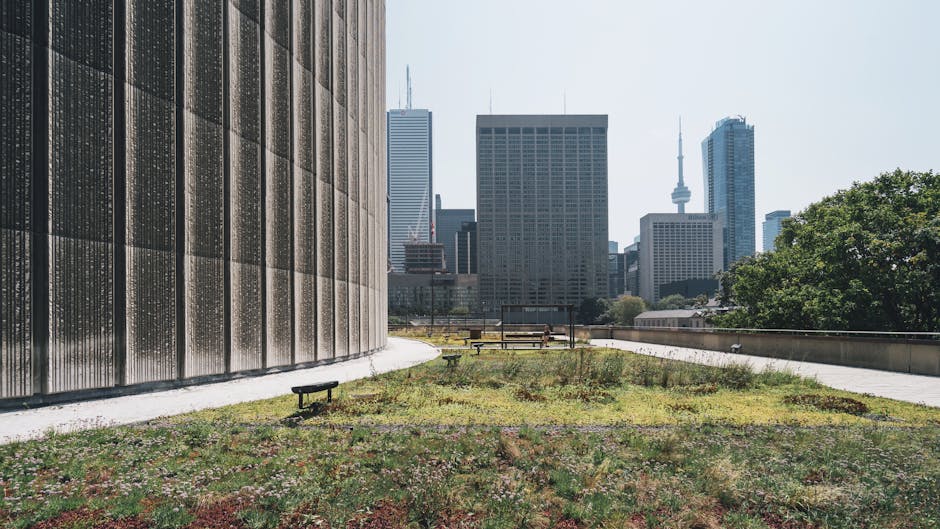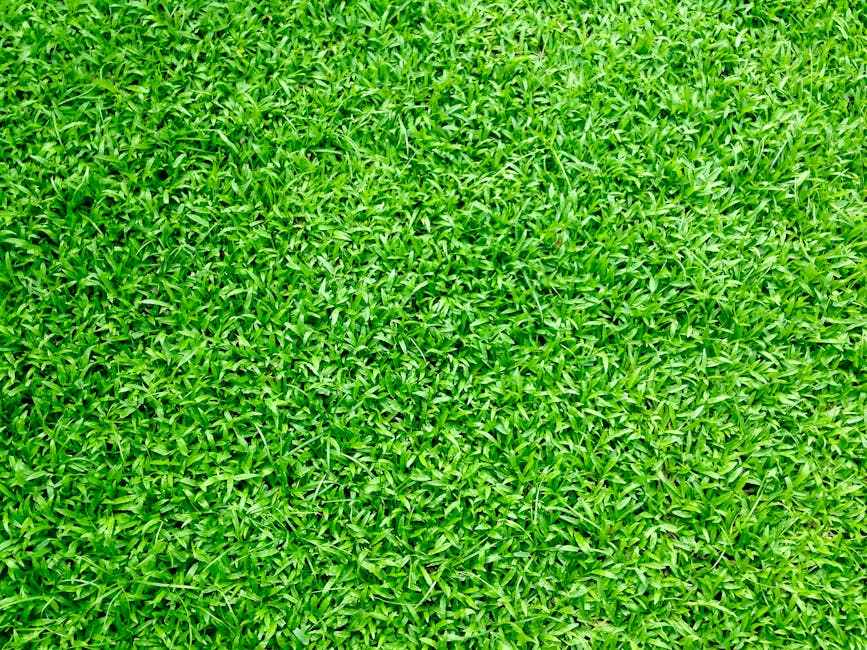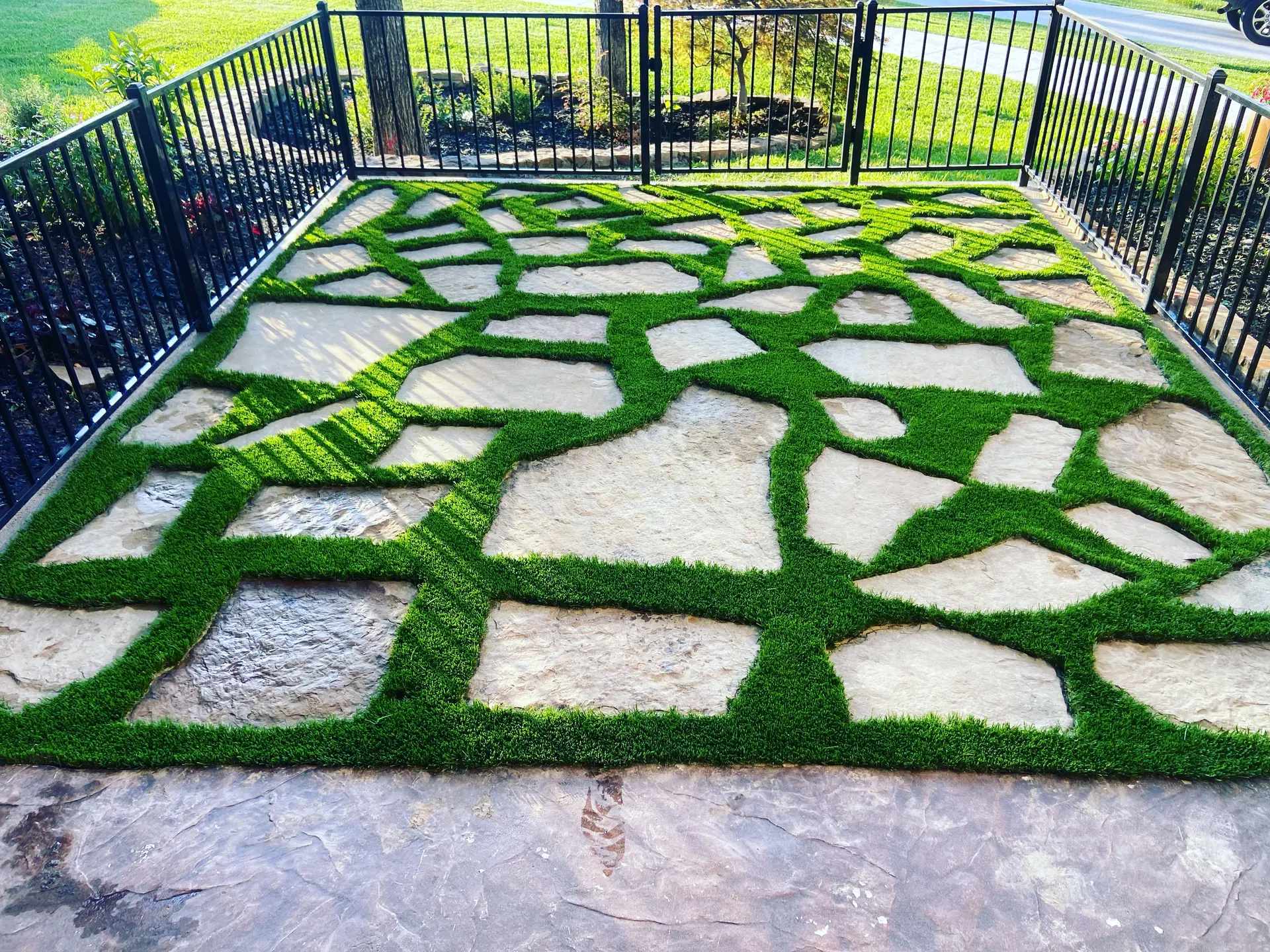
Introduction to Urban Green Spaces and Turf Grass Innovations
Urban green spaces are vital components of city planning, providing numerous ecological, social, and economic benefits. These areas include parks, gardens, green roofs, and recreational fields, often featuring turf grass as a key element.
Turf grass, traditionally used for its aesthetic appeal and functional qualities, is undergoing significant innovations to meet the demands of modern urban environments. These improvements are driven by the need for more sustainable, resilient, and low-maintenance solutions in densely populated areas.
One of the major advancements in turf grass is the development of drought-resistant varieties. Given the increasing frequency and severity of droughts, these grasses require less water, thus conserving this precious resource. For example, Bermuda grass and Zoysia grass are two species known for their drought tolerance, making them suitable for urban green spaces.
In addition to water conservation, turf grass innovations are also focusing on improving wear tolerance and recovery rates. This is particularly important in high-traffic areas such as sports fields and public parks where grass is subject to significant wear and tear. Enhanced varieties like Kentucky bluegrass have been developed to withstand consistent use while maintaining their aesthetic and functional qualities.
Another significant innovation involves disease resistance. Traditional turf grasses are often susceptible to a range of diseases, necessitating the use of chemical treatments that can be harmful to the environment. By developing disease-resistant grass types, such as certain strains of ryegrass and fescue, the reliance on pesticides is reduced, contributing to more sustainable urban green spaces.
The table below provides a comparison of some common turf grass species and their innovative characteristics:
| Turf Grass Species | Innovative Characteristics |
|---|---|
| Bermuda Grass | Drought tolerance, rapid growth |
| Zoysia Grass | Low water requirements, good wear tolerance |
| Kentucky Bluegrass | High wear tolerance, quick recovery |
| Ryegrass | Disease resistance, quick establishment |
| Fescue | Shade tolerance, disease resistance |
These innovations in turf grass species highlight the evolving landscape of urban green spaces. By incorporating advanced turf grass varieties, cities can create more resilient, sustainable, and enjoyable environments for their inhabitants.
Technological Advancements in Turf Grass Development
Technological advancements in turf grass development have introduced a multitude of innovations designed to improve the resilience, sustainability, and aesthetic quality of urban green spaces.
Genetic Engineering and Breeding Techniques
Recent breakthroughs in genetic engineering and selective breeding have yielded turf grass varieties that are more adaptable to diverse climates and conditions. Modern breeding techniques focus on developing grasses with enhanced drought tolerance, disease resistance, and reduced maintenance requirements.
For example, researchers have successfully developed hybrid grasses such as TifTuf Bermuda, which exhibits remarkable drought tolerance, and Kentucky Bluegrass varieties that are resistant to common fungal diseases.
Robotics and Automation
The introduction of robotics and automation in turf management has streamlined maintenance processes. Robotic mowers, such as those from companies like Husqvarna, are now employed in many urban green spaces to ensure consistent and efficient grass cutting. Automated irrigation systems, integrated with weather forecasting data, optimize water usage and reduce wastage.
These technologies not only reduce the labor required for upkeep but also contribute to the sustainability of turf grass by minimizing water and energy consumption.
Soil Health Monitoring
Soil health is crucial for the vigor of turf grass. Technological advancements in soil health monitoring allow for real-time analysis and precise interventions. Sensors developed by companies like Teralytic can measure soil moisture, nutrient levels, and pH, providing valuable data that informs fertilization and irrigation practices.
This data-driven approach ensures that turf grasses receive optimal care, promoting healthy growth and reducing the need for chemical interventions.
Eco-friendly Fertilizers and Pesticides
Technological advancements have also led to the development of eco-friendly fertilizers and pesticides. Innovations in this area focus on reducing the environmental impact of chemical applications. Companies like Scotts Miracle-Gro are at the forefront, creating slow-release fertilizers and organic pesticides that minimize runoff and promote sustainable turf management practices.
By incorporating these products, urban green spaces can maintain lush, healthy turf while mitigating environmental harm.
Advanced Turf Grass Varieties
Development of advanced turf grass varieties has also seen significant progress. Innovations such as the creation of low-allergy grasses, which produce less pollen, and the enhancement of perennial rye grasses, known for their rapid establishment and tolerance to wear, are noteworthy examples.
- Drought-resistant varieties: These grasses require less water and are ideal for regions facing water scarcity.
- Low-mow grasses: Varieties like dwarf fescues grow slower, reducing the frequency of mowing required.
- Shade-tolerant grasses: Advancements have produced grasses that thrive in low-light conditions, making them suitable for shaded urban areas.
These advanced grass varieties ensure that urban green spaces can be both beautiful and sustainable, accommodating various environmental and urban conditions.
Environmental Impact and Sustainability of Modern Turf Grasses
The environmental impact and sustainability of modern turf grasses have become crucial considerations in urban planning and landscape architecture. Recent advancements in turf grass innovations have significantly reduced the ecological footprint of these green spaces, promoting a more sustainable approach to urban development.
One major area of progress is the development of turf grass varieties that require less water. According to research by the University of California Agricultural and Natural Resources, drought-tolerant grasses such as Bermudagrass and Zoysiagrass have been engineered to thrive with minimal irrigation. This shift not only conserves water—a critical resource in many urban areas—but also reduces the energy consumption associated with water distribution systems.
Another important factor is the reduction of chemical inputs, such as fertilizers and pesticides. Modern turf grasses are increasingly bred for pest and disease resistance. The Environmental Protection Agency (EPA) reports that minimizing the use of chemicals not only lowers the risk of runoff pollution into waterways but also enhances the biodiversity of urban green spaces. These grasses can maintain healthy growth with fewer artificial additives, contributing to a cleaner and safer environment.
In addition, turf grass innovations have focused on improving soil health and carbon sequestration. According to a study published in the Journal of Environmental Management, turf grasses with deeper root systems promote soil stability and organic matter accumulation. These enhanced root systems help sequester carbon dioxide, a key greenhouse gas, thus playing a role in mitigating climate change.
Energy efficiency is another notable benefit. Lawns and other green spaces contribute to local cooling effects, reducing the urban heat island phenomenon. The American Society of Landscape Architects (ASLA) cites studies showing that well-maintained turf areas can lower surface temperatures by up to 35°F compared to artificial surfaces like concrete or asphalt. This cooling effect reduces the demand for air conditioning in surrounding buildings, leading to lower energy usage and decreased greenhouse gas emissions.
Moreover, the reduced need for mowing and maintenance of certain turf grass varieties leads to lower emissions from landscaping equipment. The International Society for Horticultural Science has highlighted the development of slow-growing grass species that require less frequent cutting, thereby reducing the carbon footprint associated with lawn maintenance.
In summary, the sustainability of modern turf grasses is evident through their lower water requirements, reduced chemical usage, improved soil health and carbon sequestration, energy efficiency from cooling effects, and decreased maintenance needs. These innovations are transforming urban green spaces into more environmentally friendly and sustainable components of city landscapes.
Health and Well-being Benefits of Enhanced Urban Green Spaces
Urban green spaces have long been recognized for their positive impact on public health and well-being. Recent innovations in turf grass are amplifying these benefits, contributing to healthier, more vibrant city environments. The integration of advanced turf grass solutions into urban landscapes offers a range of advantages that promote physical, mental, and social health.
Physical Health Benefits:
Green spaces provide a natural setting for physical activities such as walking, jogging, and cycling, which are crucial for maintaining cardiovascular health and reducing obesity rates. According to the Centers for Disease Control and Prevention (CDC), access to parks and recreational facilities is linked to increased levels of physical activity in urban populations. Enhanced turf grass, with its resilient and aesthetically pleasing qualities, encourages more frequent use of these spaces.
Mental Health Advantages:
Exposure to nature and green environments has been shown to reduce stress, anxiety, and depression. A study published in the journal Nature found that individuals living near green spaces had lower levels of psychological distress. Improved turf grass technology creates lush, inviting environments that can contribute to mental well-being by offering serene areas for relaxation and reflection.
Social and Community Well-being:
Enhanced urban green spaces foster social interactions and community cohesion. Areas with high-quality turf grass are more likely to host community events, sports activities, and other gatherings, which strengthen social ties and promote a sense of belonging. Research from the American Planning Association indicates that well-maintained green spaces can reduce crime rates and enhance the overall quality of life in urban neighborhoods.
Air Quality and Temperature Regulation:
Urban green spaces play a crucial role in improving air quality by filtering pollutants and producing oxygen. Furthermore, turf grass helps mitigate the urban heat island effect by cooling the surrounding areas. A study by the National Institutes of Health (NIH) highlights that green spaces can significantly lower urban temperatures, thus reducing heat-related health issues and energy consumption for cooling.
The cumulative health and well-being benefits of enhanced turf grass in urban green spaces underline the importance of continued investment and innovation in this field. By creating environments that support physical activity, mental health, social interaction, and environmental quality, modern turf grass technologies are transforming not just landscapes, but the very fabric of urban living.
Economic Implications and Cost Efficiency of Turf Grass Innovations
The economic implications of turf grass innovations significantly impact both public and private sectors. A key consideration in this context is cost efficiency, encompassing the initial investment, maintenance, and long-term benefits associated with modern turf grasses.
Initial Investment
- Modern turf grass varieties often come with higher upfront costs due to advanced breeding techniques and specialized equipment required for installation.
- Despite these initial expenses, the durability and lower need for replacement can result in long-term savings.
Maintenance and Operational Costs
One of the primary advantages of innovative turf grass is the potential reduction in maintenance costs. Traditional turf grasses often demand extensive watering, fertilizing, and mowing, contributing to ongoing expenses. In contrast:
- New turf grass varieties are often engineered to require less water and nutrients.
- They may also have slower growth rates, reducing the frequency of mowing.
- Innovations in pest resistance can lower the need for chemical treatments, further cutting costs.
Longevity and Durability
Durability is another critical factor in evaluating the economic benefits of innovative turf grasses. Enhanced resilience leads to reduced re-sodding or reseeding needs, directly impacting long-term maintenance budgets. This is particularly relevant in high-traffic urban areas where traditional grasses might suffer substantial wear and tear.
Economic Benefits to Cities and Communities
- Improved aesthetics and functional green spaces can increase property values.
- Well-designed urban green spaces may enhance tourism and local business revenues.
- Reduced heat island effects can lower city-wide energy costs by cutting down on air conditioning use.
In summary, while the upfront costs associated with turf grass innovations might be seen as a barrier, the long-term savings on maintenance and operational expenses, coupled with broader economic benefits for communities, present a compelling case for their adoption in urban landscapes.
Case Studies of Transformative Urban Green Space Projects
In exploring the transformative potential of turf grass innovations, several cities around the world have leveraged advanced grass technologies to enhance urban green spaces. These projects demonstrate the practical applications and benefits of modern turf grass solutions in diverse urban settings.
Central Park, New York City
Central Park is an iconic example of how turf grass maintenance practices have evolved over the years. Recent innovations include the use of drought-resistant turf grasses such as Festuca arundinacea and advanced irrigation systems to minimize water consumption. These measures have contributed to the park’s lush, resilient lawns while significantly reducing its environmental footprint.
Queen Elizabeth Olympic Park, London
The development of Queen Elizabeth Olympic Park in London has incorporated eco-friendly turf technologies to create a sustainable urban green space. The Park utilizes varieties like Agrostis stolonifera, known for its durability and low maintenance requirements. Additionally, the integration of automated irrigation systems ensures optimal water usage, supporting the park’s sustainability goals.
Chifley Square, Sydney
Sydney’s Chifley Square is another example where turf grass innovations have been applied successfully. The use of hybrid turf grasses, which combine natural and synthetic materials, has provided a durable surface that can withstand high foot traffic. This approach has enhanced the longevity and visual appeal of the square while reducing maintenance costs.
Millennium Park, Chicago
Millennium Park in Chicago showcases the potential of advanced turf grass varieties in urban environments. The park employs a mix of Kentucky Bluegrass and Perennial Ryegrass, chosen for their adaptability to varying weather conditions and aesthetic appeal. This combination has helped maintain the park’s vibrant green spaces, enhancing the overall visitor experience.
Conclusion
These case studies illustrate the diverse applications and benefits of modern turf grass innovations in urban green spaces. By adopting advanced technologies and eco-friendly practices, cities can transform their landscapes, achieving greater sustainability, durability, and aesthetic value.
Future Trends and Predictions for Urban Green Spaces and Turf Grass
As urban centers continue to expand, the significance of green spaces within city landscapes is gaining recognition. Future trends and predictions for urban green spaces and turf grass are shaped by several key factors, including technological advancements, environmental concerns, and societal demands for healthier living environments.
One major trend is the increasing adoption of smart irrigation systems. These systems, equipped with sensors and linked to weather stations, enable precise water management by adjusting irrigation schedules based on real-time data. The goal is to optimize water usage, reduce waste, and maintain healthy turf grass. According to a report by the Environmental Protection Agency (EPA), the use of smart irrigation can reduce outdoor water use by up to 15%.
Additionally, the development of drought-tolerant turf grass species is expected to gain momentum. Researchers are focusing on breeding grasses that require less water and are more resistant to extreme weather conditions. For example, varieties of Buffalograss and Bermudagrass are being cultivated for their resilience and lower water needs. These types of innovations address the challenges posed by climate change and are essential for sustainable urban planning.
Furthermore, the integration of multi-functional green spaces is predicted to rise. Urban planners are increasingly designing green areas that serve multiple purposes, such as recreational spaces, community gardens, and green roofs. The incorporation of diverse plant species and innovative landscaping techniques enhances biodiversity and creates more resilient ecosystems within cities.
Predictive analytics will also play a crucial role in the future of urban green spaces. By analyzing historical data and current trends, cities can better anticipate the needs and challenges of maintaining urban greenery. This data-driven approach helps in planning for resources, optimizing maintenance schedules, and improving the overall health of green spaces.
Urban population growth and densification necessitate the integration of green spaces into small and unconventional areas. Vertical gardens and green walls are becoming popular solutions for adding greenery in densely built environments. These installations not only enhance aesthetic appeal but also contribute to air purification and temperature regulation.
Lastly, community involvement and awareness are expected to play a pivotal role in the future of urban green spaces. Public engagement in the planning and maintenance of green areas fosters a sense of ownership and responsibility. Educational programs and community initiatives aimed at promoting the benefits of urban greenery are crucial for the sustained success of these spaces.
In conclusion, the future of urban green spaces and turf grass innovations is set to be dynamic and multifaceted. Emphasis on sustainability, technological integration, and community participation will drive the transformation of city landscapes, making urban areas more livable and environmentally friendly.



